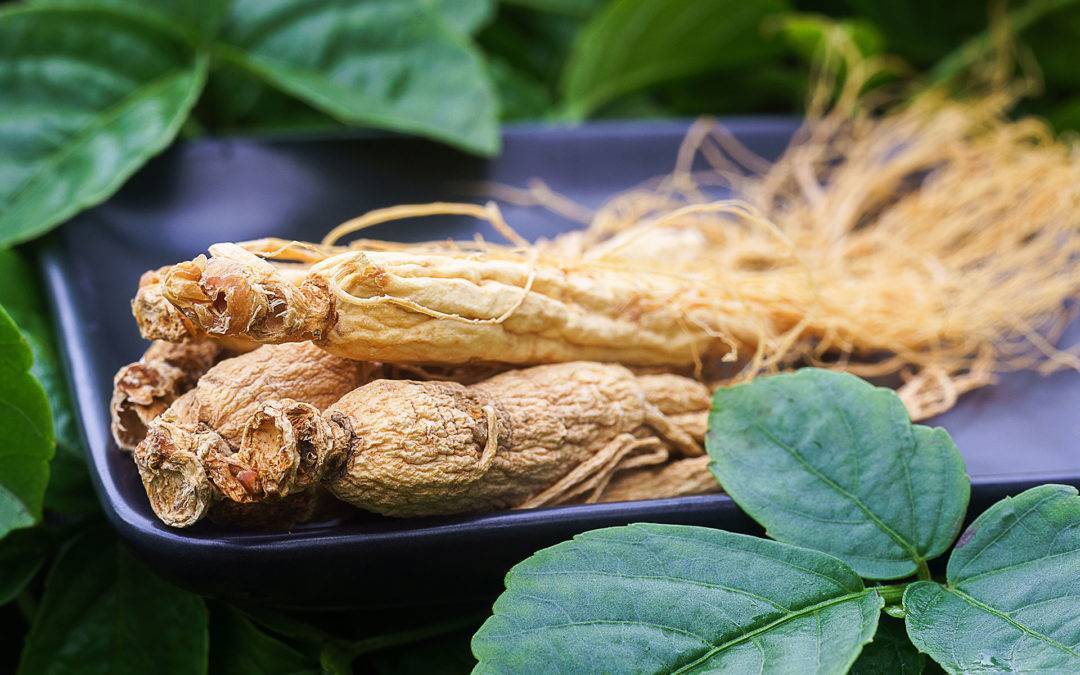Origin
Ginseng is a herbaceous, 40-60 cm tall, perennial plant that grows in the forests of northern Manchuria, Korea, China, eastern Siberia and North America. You use its roots.
Bioactive principles and therapeutic properties
Its root is used for tonic action on physical and intellectual performance. Its name “Panax”, a panacea, indicates that it is considered capable of healing everything. In fact, the Ginseng root is rich in ginsenosides, vitamins (especially of the B group), mineral salts (copper, phosphorus, iron, zinc, magnesium and calcium), trace elements (silicon and selenium) and amino acids.
Ginsenosides are triterpene saponins capable of influencing numerous metabolic pathways which explain the multi-targeted action of this plant: antioxidant action, anti-allergic activity, increase in psychomotor capacity, anti-tumour and resistance to stress.
Mechanism of action
Ginseng is capable of antagonizing stress-induced immunosuppression and increasing resistance when subjected to physical exertion. It exerts its effect through the modulation of plasma cortisol levels by indirect action on the . hypothalamic-pituitary-adrenal axis .
Tolerability
When used appropriately, Ginseng is relatively safe at a daily dose of 15 mg per kg of body weight for a period of three months. High doses may produce diarrhea, hypertension, nervousness, insomnia and rash.

